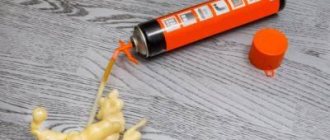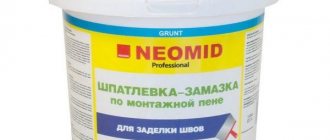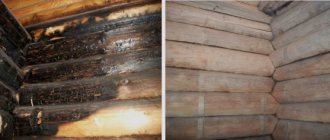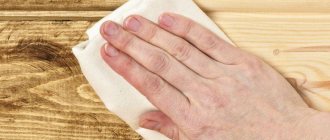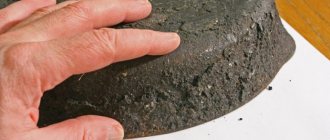Polyurethane foam is a widely used building material, the frequent use of which is due to its adhesive properties.
It is recommended to work with polyurethane foam only with gloves, but not everyone follows clear instructions, as a result of ignoring which it becomes possible to find out how corrosive the material used is.
Today we will try to figure out how and how to wash foam from your hands.
Removing fresh foam
As soon as foam gets on your skin, you should immediately remove it with a damp cloth or cloth. Do not rub the stain on the skin, so as not to aggravate the situation.
You can clean fresh foam sealant using traditional methods, for example, salt, dimexide, gasoline, sunflower oil. Start with the options that are most gentle on the epithelium.
Vegetable oil
The method will not harm the skin, but to be effective you will have to stock up on time and patience.
- Heat the oil slightly and soak a cotton pad in it.
- Place it on the contaminated area and leave for half an hour.
- Wash your hands thoroughly with soap.
Attention! The oil for the procedure should be warm, but not hot, so as not to get burned.
Salt
If the contamination is minor, you can use coarse table salt for cleaning. Rub your hands thoroughly with salt and then rinse with water.
We recommend reading: The drum in the washing machine has stopped spinning. Causes of failure.
Nail polish remover, kerosene, gasoline, acetone
These products will only bring results if the construction foam on the skin has not had time to dry completely. Soak a cloth in the liquid and wipe off the dirt. At the end of the procedure, be sure to wash your hands and lubricate with nourishing cream.
If nail polish remover is not available, use acetone. You can also remove foam from the skin with kerosene or gasoline; they are used in a similar way.
Dimexide
Before scrubbing the foam with dimexide, you should assess the extent of the contamination. If large areas are stained, it is better to choose another method, since the medicine, being absorbed into the body through the pores, can cause a side effect due to an overdose.
Is it possible to remove polyurethane foam with alkali and acid?
Aggressive chemicals actively attack the composition of the sealant, destroying it. But they can cause serious skin burns; under no circumstances should they be used to cleanse hands.
The only safe option is a steam bath with soda, which is known to be alkaline. Add a couple of tablespoons of soda to hot water and hold your hands over the container for half an hour. After this procedure, the softened sealant can be easily washed off.
How to prepare to work with foam
If the performer does not use gloves for any reason, then it is recommended to generously lubricate your hands with Vaseline or rich cream , which reduces the degree of adhesion of the foam to the skin of the hands. And it will be easier to remove dirt. But there is a risk that the cylinder will slip out of your hands.
Respirator Source FFP1 with valve. Photo by Leroy Merlin
The use of a mask and gloves is highly recommended; an alternative to a mask is safety glasses.
It is recommended to carry out the work either in special clothing or in things that you would not mind throwing away at the end of the work, since it will be difficult, but possible, to remove the composition from clothing without causing a change in color or structure.
Surrounding furniture and surfaces not intended for applying foam must be protected with film.
If the contractor does not have a very high level of qualifications and experience in construction, it is recommended to first purchase special foam removal products . They allow you to quickly remove dirt. And there is no need to save money, especially when choosing a hand sanitizer. Poor quality products can lead to adverse reactions.
It is recommended to carry out work with an assistant , which minimizes the likelihood of contamination.
How to wash foam from hands if it has dried
You can’t get away with this with a damp cloth; bring in the “heavy artillery” in the form of rough mechanical cleaning or solvents and special means.
Solvents
White spirit and similar preparations are effective in removing foam from the skin, but at the same time they dry it out greatly. Dampen a clean cloth with the product and cover the stain for a few minutes, rubbing the stain to enhance the effect. Next, wash your hands thoroughly using glycerin soap, then lubricate with cream.
Special liquids, aerosols
You should think about how to remove sealant from any surface before starting construction or repair work. Along with the polyurethane foam, it is advisable to purchase a product for its removal; as a rule, it is sold in the same store in the form of a liquid or aerosol. Before use, be sure to read the instructions and follow them strictly.
We recommend reading: How to avoid flooding your neighbors: fixing the washing machine drain
Specialized products for cleaning skin from foam
To wash away dirt from skin areas, it is more advisable to use professional cleaners. Solvents based on acetone and Dimexide are less effective and cause more damage to the epidermis.
The cleaner is a colorless transparent mixture of organic solvents with the addition of a propellant (propellant gas). Available in two forms:
- an aerosol spray contained in a cylinder under compressed gas pressure;
- liquid in which the fabric is soaked for processing.
The industry produces cleaners that remove fresh construction foam and products that remove dried sealant. Chemical reagents soften the polyurethane foam, after which it is easily removed.
Popular brands of cleaners for surfaces, clothing, leather:
- Penosil CLEANER - cleans unhardened foam;
- Soudal - available in the form of a gel, the kit includes an application tube that ensures accurate and economical dosing;
- Bau Master - does not contain aggressive components, gently cleanses the skin from fresh polyurethane foam;
- Kudo Foam Remover - removes dried sealant, dissolves the polymer within half an hour, the product is carefully removed with a dry cloth;
- Tutan - removes fresh and dried foam;
- Mastertex - together with dried polyurethane foam, dissolves plastic, painted surfaces and fabrics, use with caution.
Work with the cleaner should be carried out in a well-ventilated area. You need to wear safety glasses when spraying the aerosol. In case of accidental contact with eyes, rinse immediately under running water.
How to wash polyurethane foam from your hands: important recommendations
Some more useful tips.
- Cosmetic scrubs, which have many beneficial properties, are useful for removing foam sealant from the skin. They have a mechanical effect on the affected area, and at the same time nourish and moisturize. Use the products according to the instructions.
- Any procedure to remove dirt from the skin must be completed by thoroughly rinsing off the cleanser with any remaining foam with water. It is also advisable to treat the surface of your hands with a cream that has antiseptic and regenerating properties.
- If traditional methods do not cope with the task, and you do not want to purchase a special liquid, there is only one way out - wait until the sealant disappears on its own. On average it takes 2–3 days.
You cannot try methods not described in the article without firm confidence in their safety. Some remedies may not only be ineffective, but also harmful to health.
Effective cleaning methods
Removing the mounting compound from various surfaces can cause serious difficulties for specialists and novice craftsmen.
There are several effective ways to remove excess construction sealant residue:
- Mechanical cleaning. Fresh foam residues can be removed with any available tool - a sharp knife, scissors or a metal spatula. First, the protruding part of the sealant is cut off so as not to damage the surface. The remaining amount of the composition is cleaned with a napkin or a piece of cloth soaked in solvent.
- Cleaning with special solvents for mounting composition. Such chemicals are available for purchase in construction stores and supermarkets; they are designed to remove remnants of fresh and hardened sealant. The most popular products: Penosil Foam Cleaner and Premium Cured, Ultima Professional, Cosmofen 5.
- Cleaning with household solvents. The following preparations are often used to remove sealant residue from surfaces: white spirit, acetone, and car paint removers.
- Cleaning with the pharmaceutical preparation "Dimexide". It promotes rapid destruction of the foam structure, after which remaining dirt can be easily removed with a damp cloth.
- Cleaning with natural vegetable oils. They provide softening of hardened composition and delicate dry cleansing.
- Cleaning with water. Similar to oils, water helps to soak the sealant, after which the residue can be quickly removed mechanically.
How to protect your hands and not get dirty?
Before working with construction foam, take precautions. Wear thick gloves and remove them after installation.
Even if you handle the cylinder or gun correctly, there is a risk of getting dirty with polyurethane foam. Contact with the skin of the hands can cause damage to epithelial cells. If trouble does occur, do not panic, because there are professional means and folk methods for cleaning polyurethane foam. Any method must be used carefully, following the instructions, so as not to cause even more harm to the skin.
We recommend reading: How to avoid flooding your neighbors: fixing the washing machine drain
Folk remedies
Fresh, not yet hardened mounting sealant can be easily removed using available means. For example, vegetable oil and salt do not cause side effects or allergies, as they are environmentally friendly products.
Sunflower oil
- Take a dry cloth and try to move the sealant towards the center of the stain. Remove as much as you can in a quick motion.
- Heat the oil to 60 degrees, apply to the stained area.
- After 10–15 minutes, rinse off the sealant with water.
Salt bath for hands
- Pour 2 liters of hot water into a small container.
- Add 2 tbsp. l. salt, stir.
- Dip your hands into the solution and hold for 15–20 minutes.
- Remove any remaining sealant with a brush.
- Lubricate the skin with rich cream.
Pumice or sandpaper
Only mechanical action with abrasive materials helps remove hardened sealant. To make the process easier, your hands can be steamed or oiled. This will reduce the risk of skin damage and speed up cleaning. Treat the surface of the pumice with laundry soap. Start rubbing off the sealant using gentle, smooth movements. After removing the composition, wash your hands with warm water and apply moisturizer.
Mounting gun
After pouring foam into all the necessary places, particles of it may remain in the gun, which will soon dry out. The sooner a person notices its traces, the easier it will be to clean the construction equipment.
How to clean the gun:
- Check to see if the foam has dried. If it is still soft, then the gun needs to be washed with Isofoam R cleaner.
- When it has time to harden, you need to either clean off the residue with a screwdriver or use a solvent (OPPA or PENOSIL).
After cleaning, the gun will work again. The main thing is to clean carefully, especially if you use a screwdriver and other items for mechanical cleaning.
Aerosols, gasoline and white spirit
Cleaning linoleum or plastic is not particularly difficult
However, it is important to know how to remove construction foam from clothing. Cleaning fabric is a more complex process, so be mentally prepared for the fact that the item will have to be written off
However, we recommend that you do not give up right away and try one or more methods. Stop by a hardware or hardware store and purchase a suitable aerosol product. Before starting treatment, you should carefully remove any remaining dried substance. To do this, take a sharp object and try to clean the stained fabric as much as possible. Then you can move on to working with the aerosol.
Initially, we test the composition on an inconspicuous area. Make sure that the material is not deformed due to exposure to the aerosol and that the paint does not suffer. If the composition is safe, apply it to the problem area, after half an hour, rinse the material under the tap and wash it using a highly active powder. Often one time is not enough and the contamination remains noticeable. In this case, carry out the processing again. For other cleaning methods, use refined gasoline or white spirit. This way, the clothes will be cleaned more carefully, but the effectiveness of the method is noticeably weaker. Just put a little solvent on a cotton swab and apply it to the stained area. When finished cleaning, apply stain remover to the item and wash.
How can you remove it when it's dried out?
To remove sealant that has already dried, you will have to resort to a mechanical method; solvents will not cope with the task. The skin is generously lubricated with a rich cream and the dirt is carefully wiped off with a pumice stone or a stiff brush. You can scrape off the dirt well with your own nails. Fine sandpaper can also be used, but it must be used very carefully to avoid damaging the leather. After removing the sealant, your hands must be re-treated with cream.
